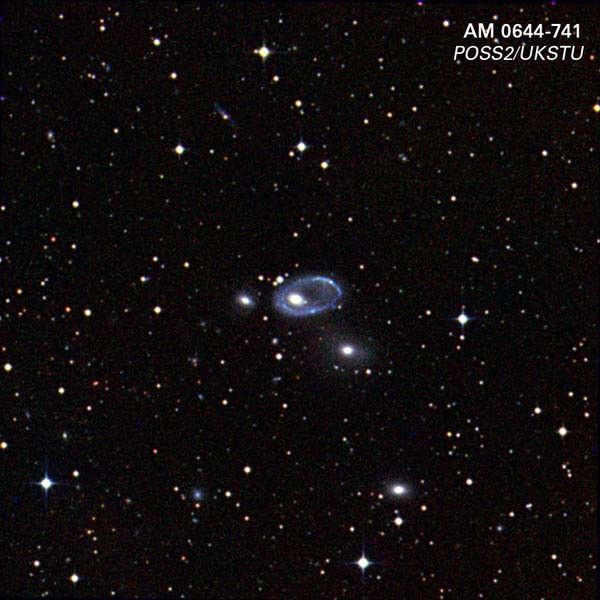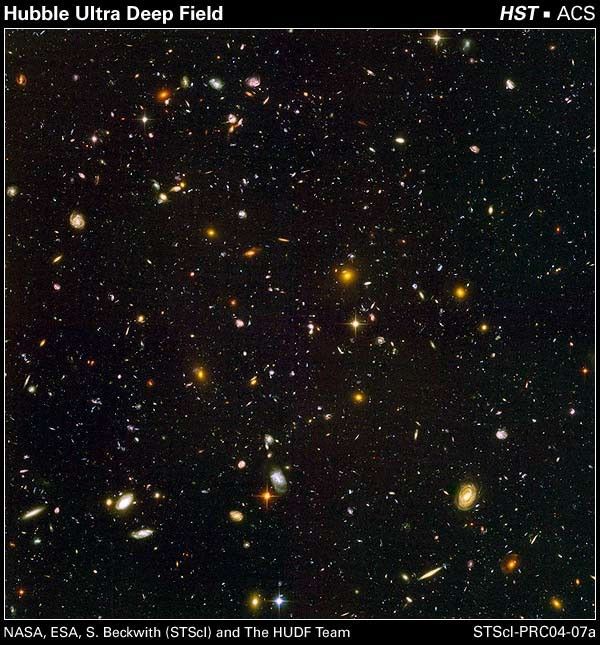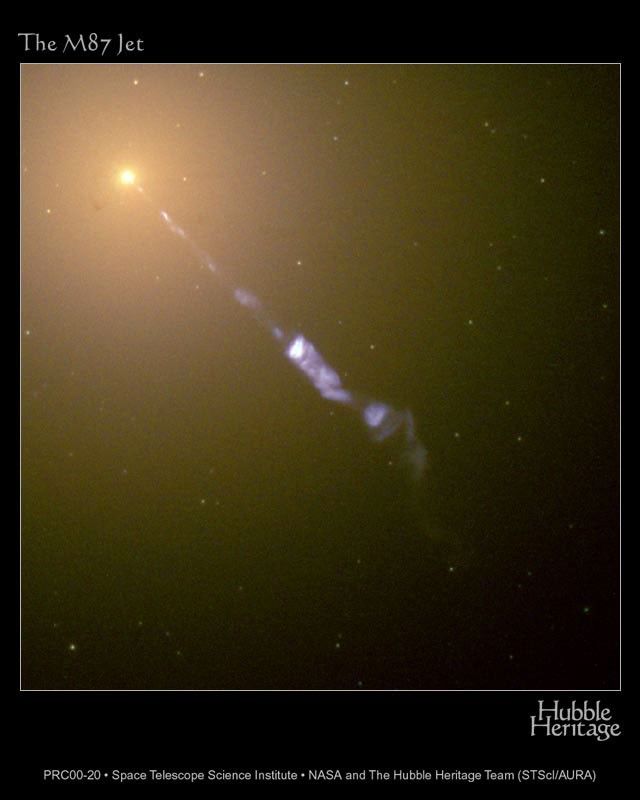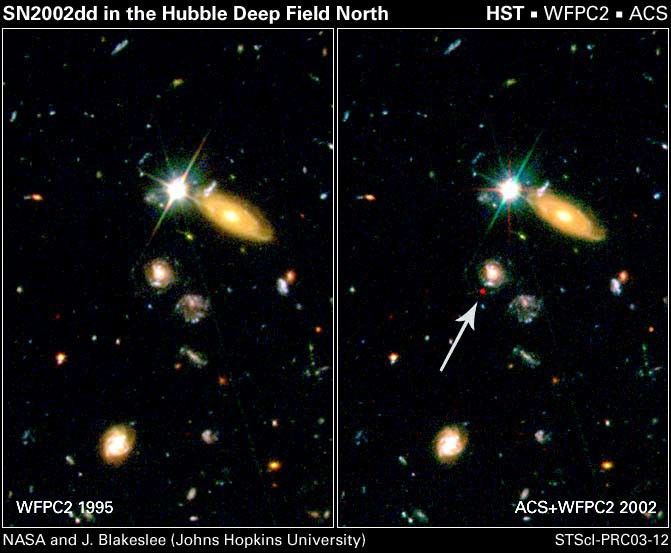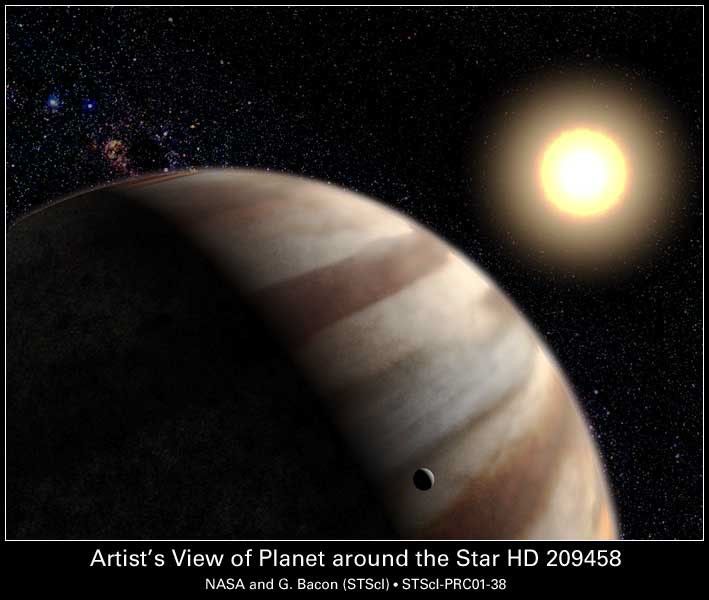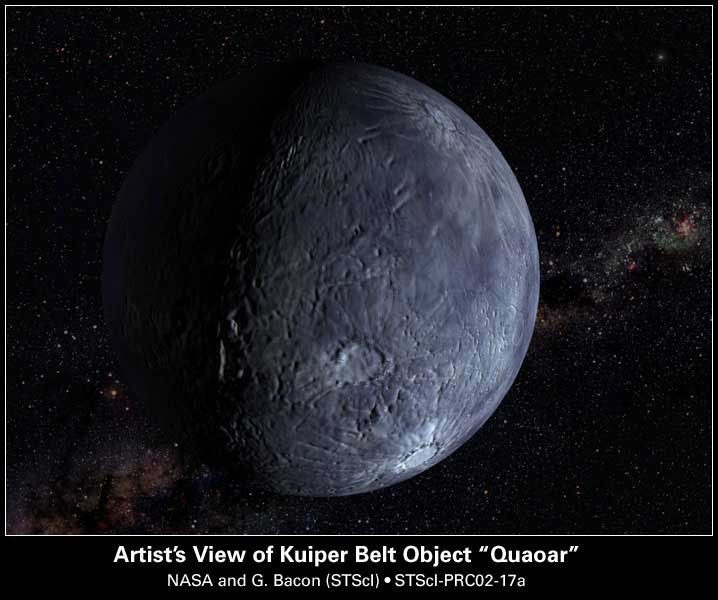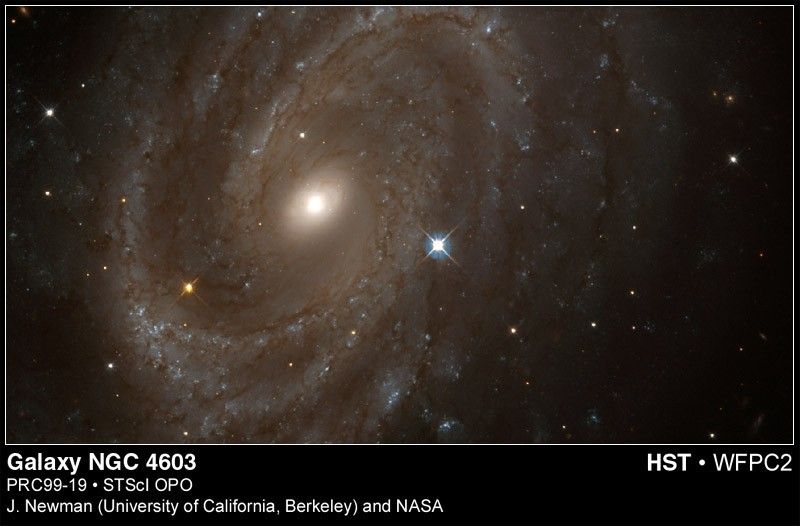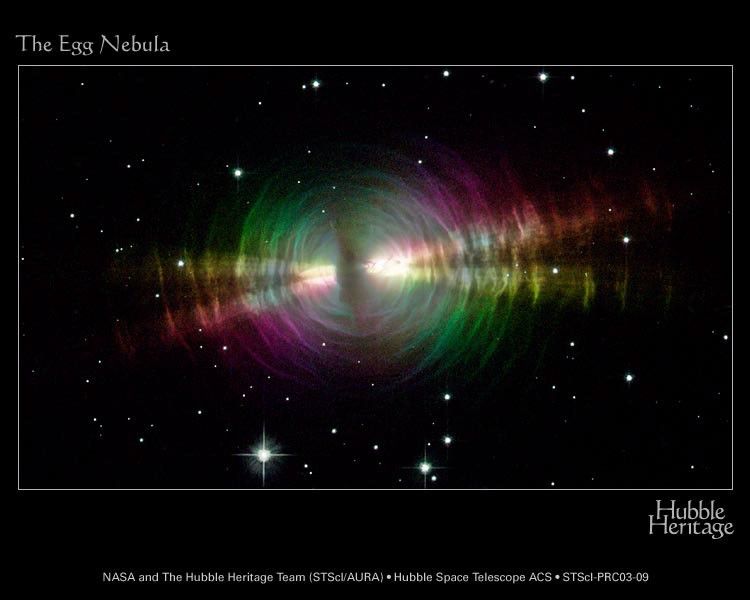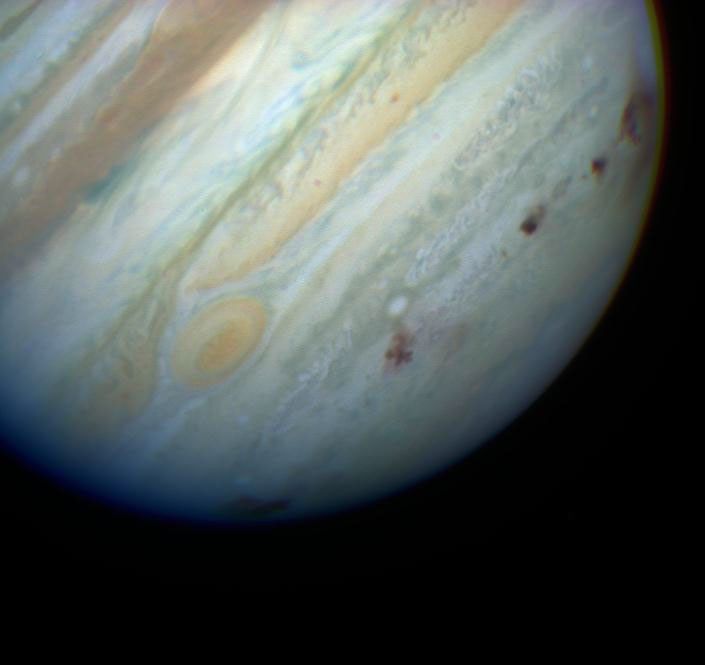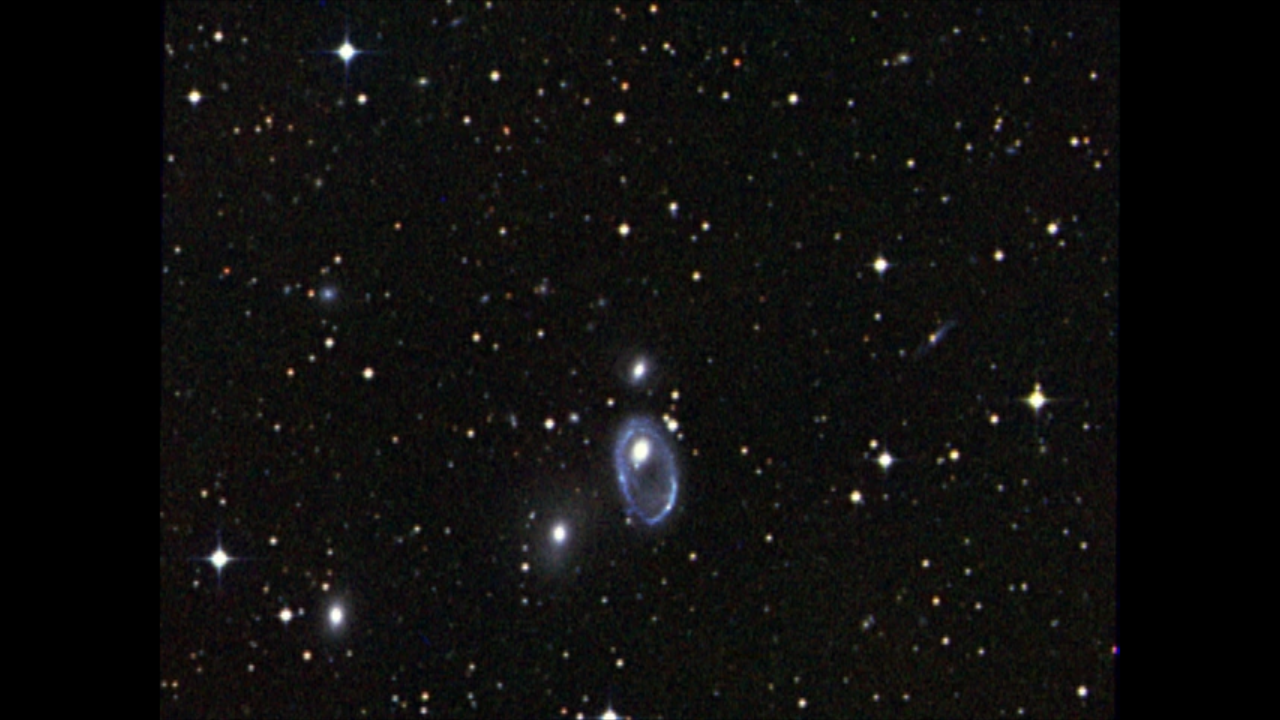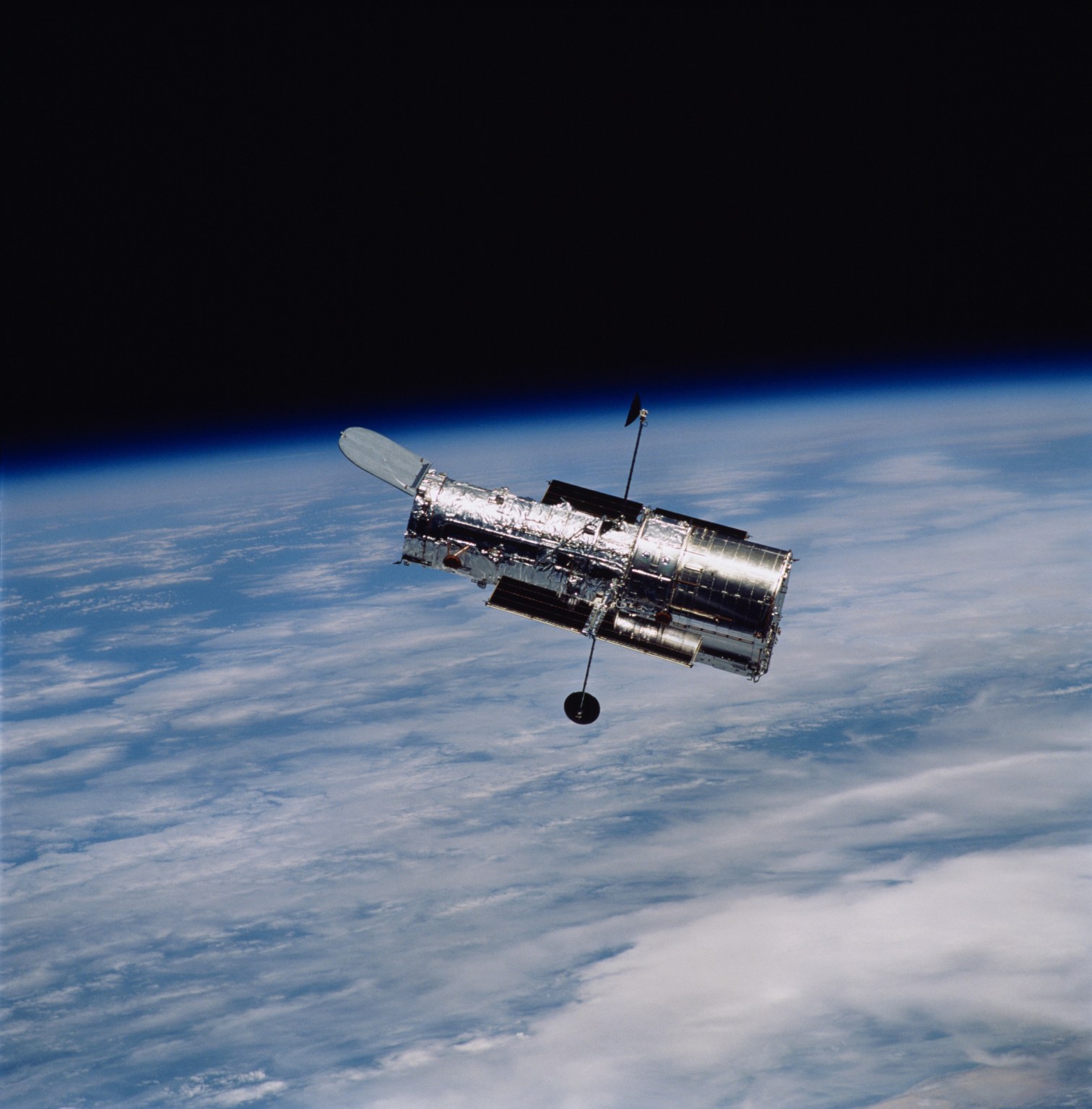1 min read
Blue Stars Ring Nucleus of Galaxy AM 0644-741

Resembling a diamond-encrusted bracelet, a ring of brilliant blue star clusters wraps around the yellowish nucleus of what was once a normal spiral galaxy in this new image from NASA's Hubble Space Telescope (HST). This image is being released to commemorate the 14th anniversary of Hubble's launch on April 24, 1990 and its deployment from the space shuttle Discovery on April 25, 1990.
The sparkling blue ring is 150,000 light-years in diameter, making it larger than our entire home galaxy, the Milky Way. The galaxy, cataloged as AM 0644-741, is a member of the class of so-called "ring galaxies." It lies 300 million light-years away in the direction of the southern constellation Volans.
Ring galaxies are an especially striking example of how collisions between galaxies can dramatically change their structure, while also triggering the formation of new stars. They arise from a particular type of collision, in which one galaxy (the "intruder") plunges directly through the disk of another one (the "target"). In the case of AM 0644-741, the galaxy that pierced through the ring galaxy is out of the image but visible in larger-field images. The soft spiral galaxy that is visible to the left of the ring galaxy in the image is a coincidental background galaxy that is not interacting with the ring.
The resulting gravitational shock imparted due to the collision drastically changes the orbits of stars and gas in the target galaxy's disk, causing them to rush outward, somewhat like ripples in a pond after a large rock has been thrown in. As the ring plows outward into its surroundings, gas clouds collide and are compressed. The clouds can then contract under their own gravity, collapse, and form an abundance of new stars.
The rampant star formation explains why the ring is so blue: It is continuously forming massive, young, hot stars, which are blue in color. Another sign of robust star formation is the pink regions along the ring. These are rarefied clouds of glowing hydrogen gas, fluorescing because of the strong ultraviolet light from the newly formed massive stars.
Anyone who lives on planets embedded in the ring would be treated to a view of a brilliant band of blue stars arching across the heavens. The view would be relatively short-lived because theoretical studies indicate that the blue ring will not continue to expand forever. After about 300 million years, it will reach a maximum radius, and then begin to disintegrate.
The Hubble Heritage Team used the Hubble Advanced Camera for Surveys to take this image in January 2004. The team used a combination of four separate filters that isolate blue, green, red, and near-infrared light to create the color image.
The Space Telescope Science Institute (STScI) is operated by the Association of Universities for Research in Astronomy, Inc. (AURA), for NASA, under contract with the Goddard Space Flight Center, Greenbelt, MD. The Hubble Space Telescope is a project of international cooperation between NASA and the European Space Agency (ESA).
About the Object
- R.A. PositionR.A. PositionRight ascension – analogous to longitude – is one component of an object's position.06h 43m 16.59s
- Dec. PositionDec. PositionDeclination – analogous to latitude – is one component of an object's position.-74° 14' 22.22"
- ConstellationConstellationOne of 88 recognized regions of the celestial sphere in which the object appears.Volans
- DistanceDistanceThe physical distance from Earth to the astronomical object. Distances within our solar system are usually measured in Astronomical Units (AU). Distances between stars are usually measured in light-years. Interstellar distances can also be measured in parsecs.Approximately 300 million light-years (92 million parsecs)
- DimensionsDimensionsThe physical size of the object or the apparent angle it subtends on the sky.This image is roughly 3 arcminutes (260,000 light-years or 81,000 parsecs) wide.
About the Data
- Data DescriptionData DescriptionProposal: A description of the observations, their scientific justification, and the links to the data available in the science archive.
Science Team: The astronomers who planned the observations and analyzed the data. "PI" refers to the Principal Investigator.This image was created from HST data from the following proposal: 9983: K. Noll, L. Frattare, H. Bond, C. Christian, F. Hamilton, Z. Levay, T. Royle and I. Jordan (STScI), and J. Higdon (Cornell University). - InstrumentInstrumentThe science instrument used to produce the data.HST>ACS/WFC
- Exposure DatesExposure DatesThe date(s) that the telescope made its observations and the total exposure time.January 16/17, 2004, Exposure Time: 2.8 hours
- FiltersFiltersThe camera filters that were used in the science observations.F435W (B), F555W (V), F625W (r), and F814W (I)
- Object NameObject NameA name or catalog number that astronomers use to identify an astronomical object.AM 0644-741, Lindsay-Shapley Ring Galaxy
- Object DescriptionObject DescriptionThe type of astronomical object.Ring Galaxy
- Release DateApril 22, 2004
- Science ReleaseThe Lure of the Rings
- Credit

Blue: F435W (B) Green: F555W (V) Pink: F625W (r) Red: F814W (I)

Related Images & Videos
Share
Details
Claire Andreoli
NASA’s Goddard Space Flight Center
Greenbelt, Maryland
claire.andreoli@nasa.gov





























